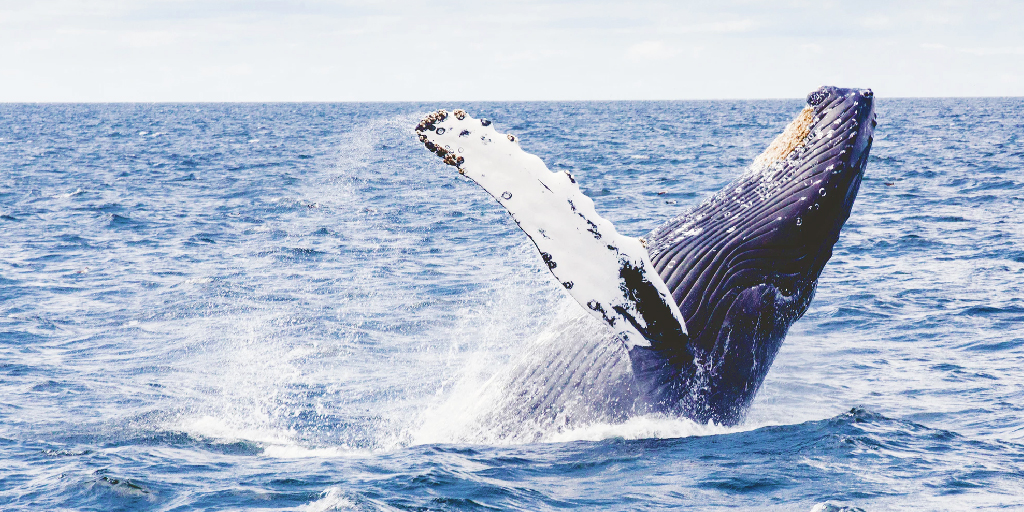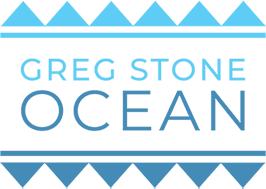Nan Hauser — “The Whale Lady”


“It’s like going to church. You’re just in awe… They know something we don’t know… It’s just wisdom in the eye. It’s terrifying, but I’m more terrified by a spider in my bedroom.”
– Nan Hauser
Based on the island of Rarotonga, in the Cook Islands, Nan Hauser, also known as ”The Whale Lady,” has been studying humpback whales for decades. As the President and Director of the Center for Cetacean Research and Conservation, Hauser leads a team of researchers in a quest for knowledge of the giant mammals. In her interview with Dr. Greg Stone on “The Sea Has Many Voices” podcast, Hauser shares some of that knowledge along with her concerns for the future of whales.
The fascinating, Gentle Giants of the Sea
Millions of people around the world are fascinated by whales. A search for “whale video” on Google yields over 48 million results. Whale watching is a $1.2 billion per year industry. Whale songs have gone into space as part of the messages aboard the Voyager space probe. Our knowledge of whale society, whale navigation, and whale communications is at its greatest level ever. But there is still much we do not understand. Adventurous scientists like Nan Hauser work tirelessly to fill the gaps. However, our relationship with whales has not always been one of fascination and awe.
Hunted Almost to Extinction
For hundreds if not thousands of years humans have been whale hunting. They were hunted for meat and oil, bone, and blubber. Whales were regarded as just another resource to be harvested. Scientific observation of whales was done mostly for the benefit of whalers. For most of our history, whale hunting was done by “iron men in wooden ships” as the old sea chanty says. Commercial whale hunting did not truly take off until the mid-1800s. Technological advances led to rapid growth of the industry. The ships got faster and larger. Sonar was used to locate whales. The hand-thrown harpoon was replaced by explosive spears fired by cannons. By the 1960s the whaling industry hunted many species of whales to near-extinction. Whaling was unregulated until the International Whaling Commission (IWC) was founded in 1946. In 1982, the IWC issued a ban on commercial whaling, although it allows some whale hunting for “scientific purposes.”
Uncanny Nomads of the Ocean
As whale populations recover, scientists like Nan Hauser are able to discover just how amazing these beings are. She currently studies whale migration, and what she has found is fascinating. Humpback whales, for example, have been known to migrate over 5,000 miles in a year. We still don’t know how they navigate, though.
Hauser explains: “Some people think they use stars but I don’t. We think… it has to do with gravity. They would sense this gravity somehow with something that is internal, that is built in somewhere, a cellular thing. (Maybe) ancestral memory hard-wired into their DNA.”
The whales plot their courses in straight-line segments, never varying by even one degree. If a ship gets in the way, they’ll go under it rather than around. When they change their course, they make precise turns of 24.39 degrees. And the whales never repeat their course over the years. In her 21 years on Rarotonga, Hauser only observed 3 migrating humpbacks more than once.
Whales Who Lend a Helping… Fin
Whale altruism is another area that fascinates Hauser, for a very special reason. Humpback whales are well known for acting in groups to defend their own calves from sharks and orcas. But scientists have also seen humpback whales act in concert to defend other animals as well. Humpback whales have been observed protecting dolphins, seals, and even large fish from orcas. Whale altruism for other species has been recorded on video many times. And while there are stories of whales protecting humans, that behavior has been recorded on video by scientists only once. The scientist doing the recording was Nan Hauser. The person being protected was… Nan Hauser!
Nan and another diver were getting video of two humpback whales underwater. One whale was a bit standoffish, but the second approached her in a way she interpreted to be curious, even friendly. But this whale kept making physical contact.
“He put me on his head, he rolled over, he put me on his chin, he tried to tuck me under his pectoral fin. I only had a snorkel and mask.” This went on for several minutes, and Nan started to worry.
“You can’t panic with an animal because the animal’s behavior will change. I was getting cut up (by barnacles). At one point he lifted me up on his pectoral fin out of the water. I thought there was another (third) whale)… I went oh my gosh, that is a huge tiger shark… I get out of the water with tiger sharks… it was the biggest one I’d ever seen.” The humpback whale made certain she was safe. “The whale pushed me right to the boat. I started to laugh and then I started to cry… it was just this emotional thing.”
Nan’s video of the experience went viral, with over 11 million views on YouTube. There is a twist to this story: One year later, the whale returned. He was only the third humpback whale in 21 years to do so. “He swam up to me, and he stared at me. He kept nudging me with his head. He was gentle but it was like ‘Oh my god it’s you!’”
Still in Danger
Even though whale hunting is still outlawed by the IWC, humans are still the biggest threat to whales. Some countries still allow commercial whaling despite the ban. Long fishing nets can entangle whales so badly that they drown. Sleeping whales are sometimes hit by ships. Ocean pollution, especially plastic pollution, can kill whales. Global climate change threatens their food supply. Whale watching tourists can still get the thrill of a whale spy hopping to get a look at them but, without action to heal the oceans, future generations may not.
The full audio and video of Greg Stone’s interview with Nan Hauser is available at “The Sea Has Many Voices” website and Youtube. Audio versions are available on Soundcloud, Spotify, Google Play and Apple Podcast.
“The Sea Has Many Voices” is a podcast series highlighting diverse voices from the worlds of science, activism, art, and politics together. Dr. Stone brings these voices together on “a journey of understanding and hope through our oceans.”
— Luis L.
